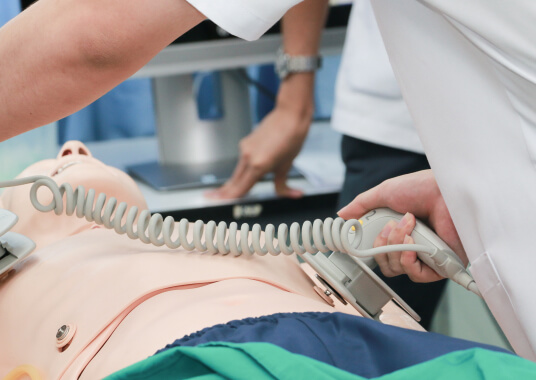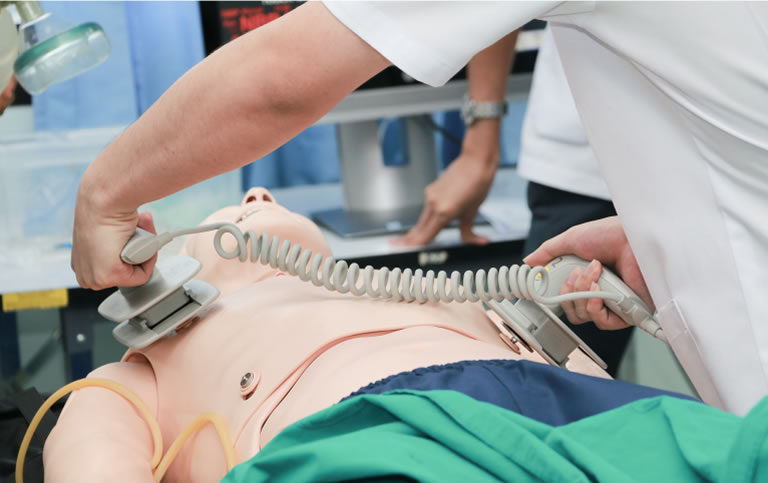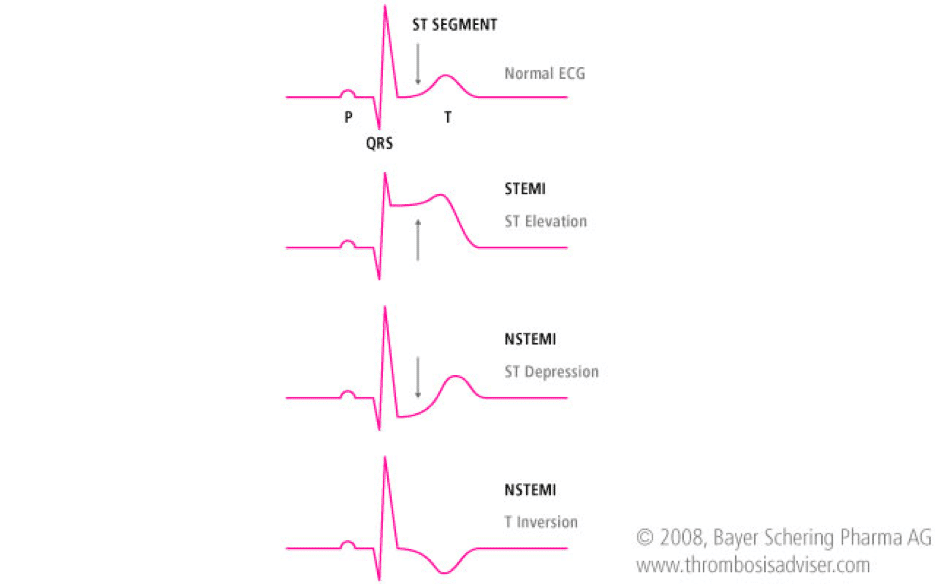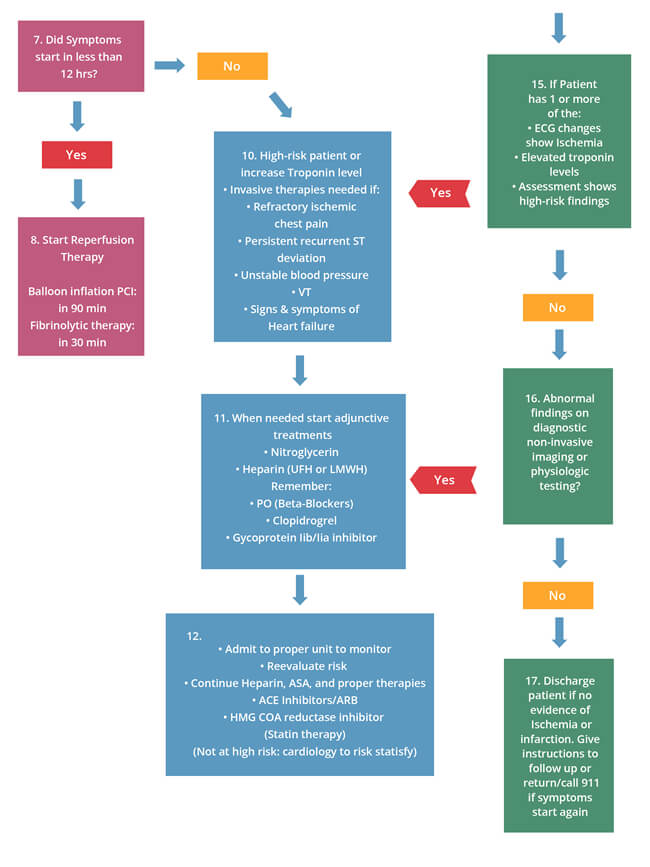Menu
Menu
CPR, First Aid, BLS, ACLS, PALS certifications.



$119.00 $169.00
| Chapters | CE Credits | Validity | Cost | Duration | ECC | Exam Attempts | Wallet Card |
|---|---|---|---|---|---|---|---|
| 17 | 4.0 – 8.0 | 2 Years | $119.00 | 3-4 Hrs | Compliant | Unlimited | Download/Print/Mail |
Acute coronary syndrome or ACS is defined as a sudden, reduced blood flow to the heart. ACS is seen in ST-segment elevation myocardial infarction (STEMI), non-ST-segment elevation myocardial infarction (NSTEMI) or unstable angina. Myocardial ischemia occurs when there is not enough blood supply to the heart muscle and that results from coronary artery disease (CAD). ACS is usually caused by atherosclerosis and coronary thrombosis, but can also be associated with cocaine use. Other conditions that cause ACS include:

The following is an algorithm that shows management of ACS in detail:

